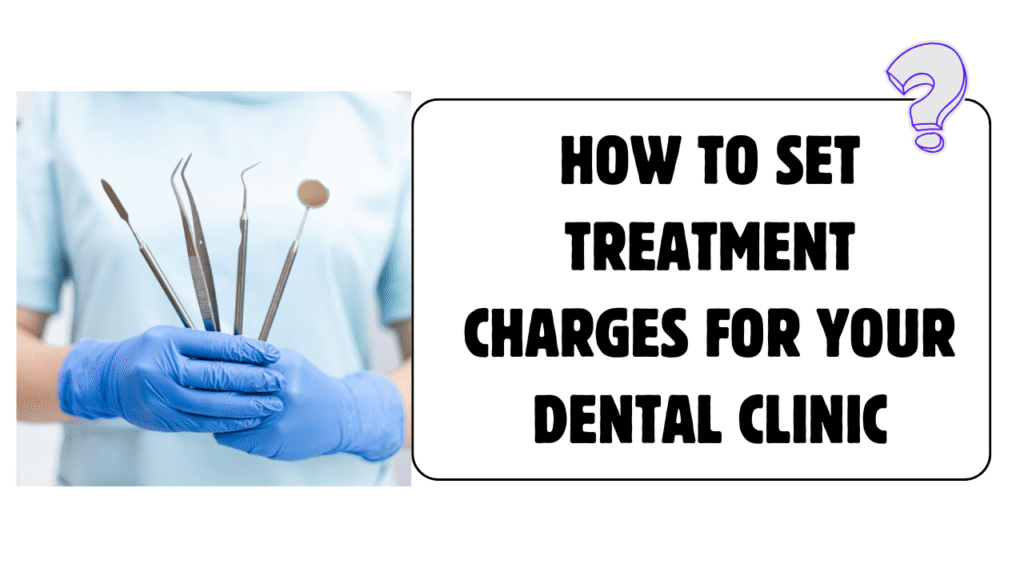One of the most common challenges for new and experienced dentists is deciding how much Treatment Charges for Dental Clinic. Setting treatment charges too high may drive patients away, while charging too low can affect clinic profitability and long-term growth.
Finding the right balance is essential to ensure fair pricing for patients and sustainable income for your dental practice. In this guide, we’ll discuss practical steps to set treatment charges for your dental clinic in India. Read our Article- When is the right time to open own Dental Clinic?
1. Understand Your Costs First
Before fixing charges, calculate your clinic’s operational expenses, such as:
- Dental chair, X-ray machine, scaler, light cure unit, compressor.
- Rent, electricity, water, and internet bills.
- Dental materials (cements, composites, impression materials).
- Staff salaries and assistant fees.
- Marketing and administrative expenses.
2. Research Local Market Rates
Charges vary by location, clinic setup, and patient base. Study what nearby clinics are charging for common procedures like:
- Dental scaling: ₹1,000 – ₹2,500
- Tooth filling: ₹800 – ₹1,500
- Root canal treatment (RCT): ₹3,000 – ₹6,000
- Braces: ₹35,000 – ₹70,000
- Implants: ₹25,000 – ₹50,000
This helps you stay competitive without undervaluing your services.

3. Factor in Your Qualifications and Experience
- A fresh BDS graduate may charge slightly lower than a senior BDS graduate or MDS specialist.
- If you have advanced certifications (implants, cosmetic dentistry, laser), your higher expertise justifies premium charges.
- Patients often value experience and are willing to pay more for trusted hands.
4. Consider Patient Demographics
Understand your target patients:
- In urban areas, patients are willing to pay more for advanced care.
- In semi-urban or rural clinics, affordability plays a bigger role.
- Offering both basic and premium treatment packages can help you serve a wider range of patients.
5. Balance Affordability and Profitability
Your charges should not discourage patients, but also must ensure profit. Some strategies include:
- Standard rates for common procedures (fillings, scaling).
- Flexible charges for complex procedures depending on material choice (e.g., zirconia vs PFM crown).
- EMI options for costly treatments like implants or braces.
6. Communicate Transparency in Pricing
Patients appreciate clear, upfront pricing. Always:
- Display a basic treatment price list in the waiting area.
- Explain treatment costs and options during consultation.
- Provide receipts (digital or paper) for transparency and trust.
7. Review and Update Charges Regularly
Costs of dental materials and lab charges keep rising. Review your charges every 6–12 months to stay updated with:
- Inflation.
- Market competition.
- Your experience growth.
Conclusion of Treatment Charges:
Setting the right treatment charges for your dental clinic requires a balanced approach. By analyzing costs, researching market trends, considering patient demographics, and ensuring transparency, you can create a fair pricing structure that satisfies both patients and your financial goals. Read our article on Guide to choosing the right Dental Software for Clinic.
👉 Remember: Patients don’t always choose the cheapest dentist — they choose the one who offers value, trust, and quality care.
